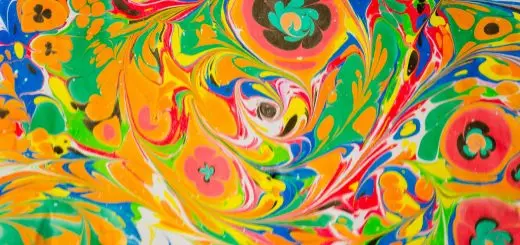Theravada Buddhism: Exploring Southeast Asian Heritage

Looking for more amazing products? Check out our online store and explore our collection here! Happy shopping!
Before diving in, please note: This post is for informational purposes only. If you’d like to know more about how we approach topics, feel free to check out our friendly Disclaimer Page.
Hey there, amazing readers! 
We’re committed to delivering quality posts, and your support (even just sticking around despite the ads) means everything to us. So, bear with us, and thanks for helping us keep the good vibes rolling. Now, on to the fun stuff!
TRANSLATE BUTTON AT THE END OF THE ARTICLE
A Quick Overview
Theravada Buddhism is one of the oldest forms of Buddhism that is practiced in Southeast Asia.
It is the dominant form of Buddhism in countries such as Thailand, Myanmar, Cambodia, Laos, and Sri Lanka.
Theravada Buddhism emphasizes the original teachings of the Buddha and focuses on individual practice and self-liberation.
This article will explore the origins of Theravada Buddhism, its spread in Southeast Asia, key beliefs and practices, the importance of monastic life, the role of meditation, and its influence on Southeast Asian culture.
Additionally, we will delve into how Theravada Buddhism is practiced in specific countries in Southeast Asia.
Introduction to Theravada Buddhism
Theravada Buddhism, also known as the "Doctrine of the Elders," is based on the earliest recorded teachings of the Buddha.
It is considered the more conservative branch of Buddhism, preserving the original teachings found in the Pali Canon.
Theravada Buddhists believe that liberation from samsara, the cycle of birth, death, and rebirth, can be achieved through individual effort and practice.
They follow the Noble Eightfold Path, which includes right view, right intention, right speech, right action, right livelihood, right effort, right mindfulness, and right concentration.
Origins of Theravada Buddhism
Theravada Buddhism traces its origins back to the first Buddhist council held after the Buddha’s death in India around 483 BCE.
At this council, the teachings of the Buddha were compiled and preserved in the Pali language, forming the basis of what would later become the Pali Canon.
Over time, these teachings spread to Sri Lanka, where they were preserved and eventually formed the basis of Theravada Buddhism.
Theravada Buddhism emphasizes the monastic tradition, with monks and nuns dedicating their lives to the study and practice of the Buddha’s teachings.
Spread of Theravada in Southeast Asia
Theravada Buddhism spread to Southeast Asia through trade and diplomatic relations.
It first arrived in Sri Lanka and then spread to countries like Thailand, Myanmar, Cambodia, Laos, and parts of Vietnam.
The spread of Theravada Buddhism was also facilitated by the construction of monasteries and the support of local rulers.
Over time, Theravada Buddhism became the dominant form of Buddhism in these countries and continues to be a significant part of Southeast Asian culture and heritage.
Key Beliefs and Practices
Some key beliefs of Theravada Buddhism include the Four Noble Truths, which are the truth of suffering, the truth of the cause of suffering, the truth of the end of suffering, and the truth of the path that leads to the end of suffering.
Theravada Buddhists also believe in the law of karma, which states that actions have consequences that affect one’s future lives.
Practices in Theravada Buddhism include meditation, chanting, and acts of merit such as giving to the monastic community.
Importance of Monastic Life
Monastic life plays a crucial role in Theravada Buddhism.
Monks and nuns are seen as the spiritual leaders of the community and are responsible for preserving the teachings of the Buddha.
Monastics follow a strict code of discipline, known as the Vinaya, which governs their conduct and interactions with the lay community.
Monasteries serve as centers of learning and meditation, where practitioners can deepen their understanding of the dharma and cultivate wisdom and compassion.
Role of Meditation in Theravada
Meditation is a central practice in Theravada Buddhism, aimed at developing mindfulness, concentration, and insight.
There are various forms of meditation, including samatha (calm-abiding) and vipassana (insight) meditation.
Through meditation, practitioners can cultivate a deep awareness of their thoughts, emotions, and sensations, leading to greater self-awareness and liberation from suffering.
Meditation retreats are common in Theravada Buddhist traditions, providing practitioners with the opportunity to deepen their practice in a supportive environment.
Influence on Southeast Asian Culture
Theravada Buddhism has had a profound influence on Southeast Asian culture, shaping art, architecture, literature, and social customs.
Temples and monasteries are prominent features of the landscape, serving as centers of religious and social life.
Buddhist festivals and rituals are celebrated throughout the year, bringing communities together in acts of devotion and merit-making.
The principles of compassion, generosity, and moral conduct taught in Theravada Buddhism have also influenced the values and ethics of Southeast Asian societies.
Theravada Buddhism in Thailand
Thailand is a predominantly Theravada Buddhist country, with over 95% of the population identifying as Buddhist.
Monks play a central role in Thai society, providing spiritual guidance, education, and support to the community.
Thai temples, or wats, are adorned with intricate artwork and golden spires, reflecting the country’s rich Buddhist heritage.
Thai Buddhists participate in rituals such as almsgiving, meditation, and merit-making ceremonies, which are believed to bring blessings and good fortune.
Theravada Buddhism in Myanmar
Myanmar, also known as Burma, has a strong Theravada Buddhist tradition, with the majority of the population practicing Buddhism.
Monks are highly revered in Burmese society, and monasteries serve as centers of learning and meditation.
The Shwedagon Pagoda in Yangon is one of the most sacred Buddhist sites in Myanmar, attracting pilgrims and tourists from around the world.
Burmese Buddhists participate in rituals such as water pouring ceremonies and offering food to monks as acts of merit and devotion.
Theravada Buddhism in Cambodia
Cambodia has a long history of Theravada Buddhism, which plays a significant role in the country’s culture and traditions.
The Angkor Wat temple complex in Siem Reap is a UNESCO World Heritage site and a symbol of Cambodia’s Buddhist heritage.
Monks in Cambodia are highly respected, and monasteries serve as centers of learning and spiritual practice.
Cambodians participate in Buddhist ceremonies and festivals throughout the year, such as Pchum Ben, Vesak, and Kathen, which commemorate important events in the life of the Buddha.
Theravada Buddhism in Laos
Laos is a predominantly Theravada Buddhist country, with monks and monasteries playing a central role in Lao society.
The country’s capital, Vientiane, is home to numerous temples and monasteries, including the famous Pha That Luang stupa.
Lao Buddhists participate in rituals such as almsgiving, meditation, and chanting, which are believed to bring blessings and spiritual merit.
The practice of Buddhism is deeply ingrained in Lao culture, influencing everything from art and architecture to social customs and traditions.
Theravada Buddhism in Sri Lanka
Sri Lanka has a rich history of Theravada Buddhism, with the majority of the population identifying as Buddhist.
The country is home to some of the oldest Buddhist temples and monasteries in the world, including the ancient city of Anuradhapura.
Sri Lankan Buddhists participate in rituals such as pujas, dana (almsgiving), and pilgrimage to sacred sites, which are believed to bring spiritual merit and blessings.
The practice of Buddhism is deeply intertwined with Sri Lankan culture, influencing art, music, dance, and literature.
Conclusion
Theravada Buddhism is a vital part of Southeast Asian heritage, influencing art, architecture, literature, and social customs in countries such as Thailand, Myanmar, Cambodia, Laos, and Sri Lanka.
Its emphasis on individual practice, monastic life, meditation, and ethical conduct has shaped the spiritual and cultural landscape of the region for centuries.
As Theravada Buddhism continues to be practiced and passed down through generations, it remains a source of wisdom, compassion, and inner transformation for millions of people in Southeast Asia and beyond.

The Enlightenment Journey is a remarkable collection of writings authored by a distinguished group of experts in the fields of spirituality, new age, and esoteric knowledge.
This anthology features a diverse assembly of well-experienced authors who bring their profound insights and credible perspectives to the forefront.
Each contributor possesses a wealth of knowledge and wisdom, making them authorities in their respective domains.
Together, they offer readers a transformative journey into the realms of spiritual growth, self-discovery, and esoteric enlightenment.
The Enlightenment Journey is a testament to the collective expertise of these luminaries, providing readers with a rich tapestry of ideas and information to illuminate their spiritual path.
Our Diverse Expertise
While our primary focus is on spirituality and esotericism, we are equally passionate about exploring a wide range of other topics and niches 

To ensure we provide the most accurate and valuable insights, we collaborate with trusted experts in their respective domains 
Our blog originally focused on spirituality and metaphysics, but we’ve since expanded to cover a wide range of niches. Don’t worry—we continue to publish a lot of articles on spirituality! Frequently visit our blog to explore our diverse content and stay tuned for more insightful reads.
Hey there, amazing reader! 
Check out our store here and take a peek at some of our featured products below! Thanks for being awesome!













